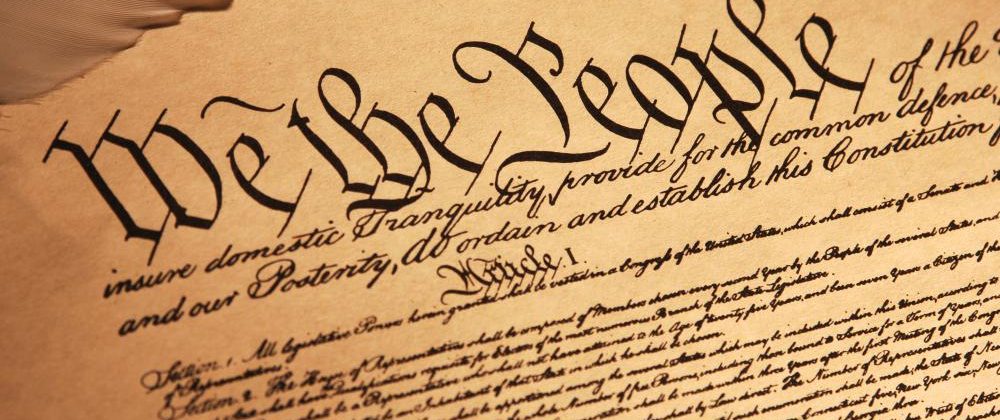

It’s possible. Here is historian James Banner at The Bulwark:
Radical conservative activists are working with Republican state legislators to trigger an extraordinary special convention to rewrite the Constitution of the United States. The possibility of it actually happening is real enough that everyone needs to pay attention—fast.
In a sense, this is old news: According to a New York Times article published over the Labor Day weekend, “Elements on the right have for years been waging a quiet but concerted campaign” to force an amendatory convention. Likewise, organizations in the political center and on the moderate left—including Common Cause, the League of Women Voters, the Sierra Club, and the AFL-CIO—have long followed the progress of the scheme and tried to alert the public to its grave dangers. So have authoritative voices from both sides of the ideological spectrum, including late Supreme Court justices Arthur Goldberg, Warren Burger, and Antonin Scalia and such prominent constitutional law scholars as Laurence Tribe and Walter Olson. Even a few unimpeachably conservative groups have published criticisms of the idea, as the Heritage Foundation did in a 2011 blog post noting “the lack of precedent, extensive unknowns, and considerable risks” of such a convention.
While a handful of figures on the left have called for a convention, it’s mostly wealthy right-wing funders who have, largely and purposefully out of sight, bankrolled the organized effort to foist one upon the country. A group called Convention of States Action—originally launched as a project of the conservative group Citizens for Self-Governance—has over the last dozen years received large grants from the Mercer family and funders in the Koch network. The Koch-network-backed American Legislative Exchange Council (ALEC) has likewise been pushing for a gathering to amend the Constitution.
The aim of these efforts is to organize state legislatures, in some of which these right-wing funders wield outsized influence, to call a convention as provided for under Article V of the Constitution. This article authorizes two-thirds of the state legislatures (that’s 34 today) to summon a convention to propose amendments to the nation’s fundamental law. As with amendments proposed the traditional way, three-quarters of the states (38 today) would then have to ratify the proposed alterations in order for them to become part of the Constitution.
Amendments can be proposed piecemeal and accepted or rejected by the states in such a manner that few or none may end up being adopted. But the greatest danger is that there’s nothing in Article V that prevents an amendatory convention from following the example of the 1787 convention in Philadelphia, which became a runaway convention by simply assuming its freedom to propose a substitute for the very frame of government, the Articles of Confederation, under which it convened. Can we imagine anything as authoritative, carefully considered, and acceptable to the people of 38 states emerging from a runaway convention today?
Making the emergence of anything suitable from an Article V convention, whether runaway or not, even less likely is that the entire process for the authorization and functioning of a convention is under dispute. And reaching agreement on the process would be a matter of unprecedented constitutional contention among the states, Congress, and the federal courts. Crucially in this regard, the number of states whose legislatures have fully and legally called for an Article V convention remains uncertain. It could be as high as 29.
Read the rest here.